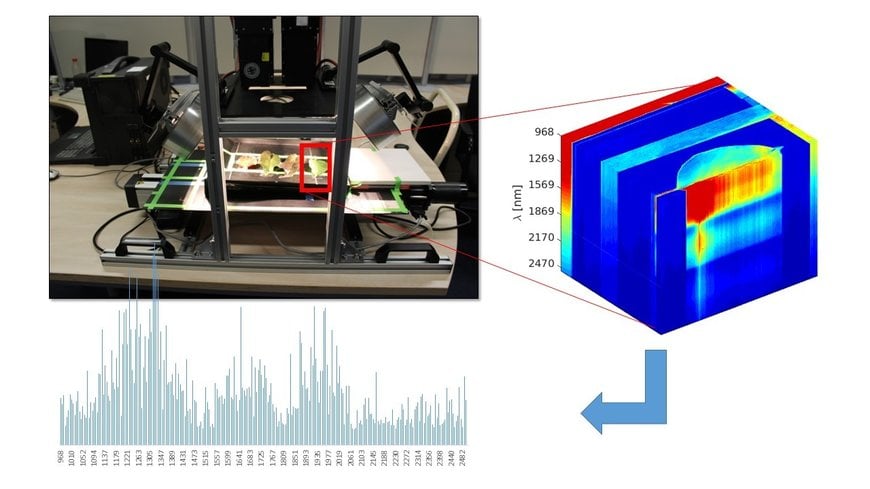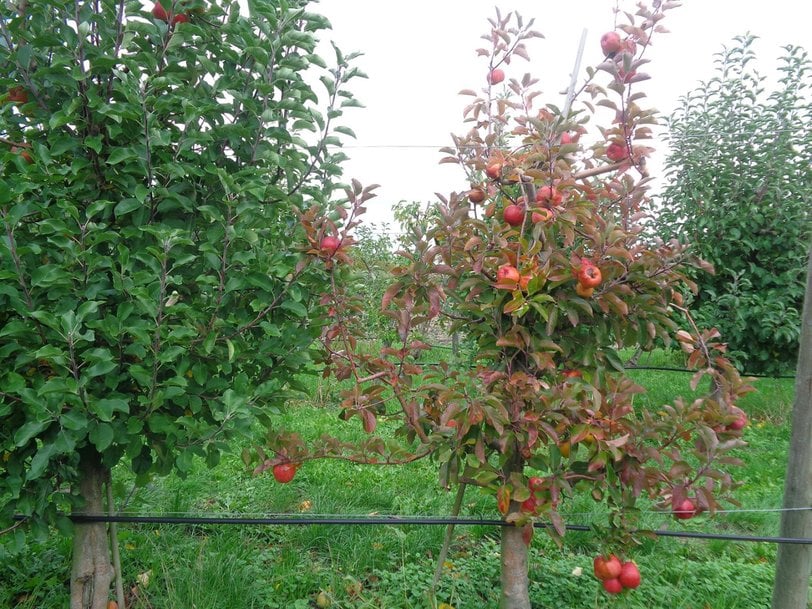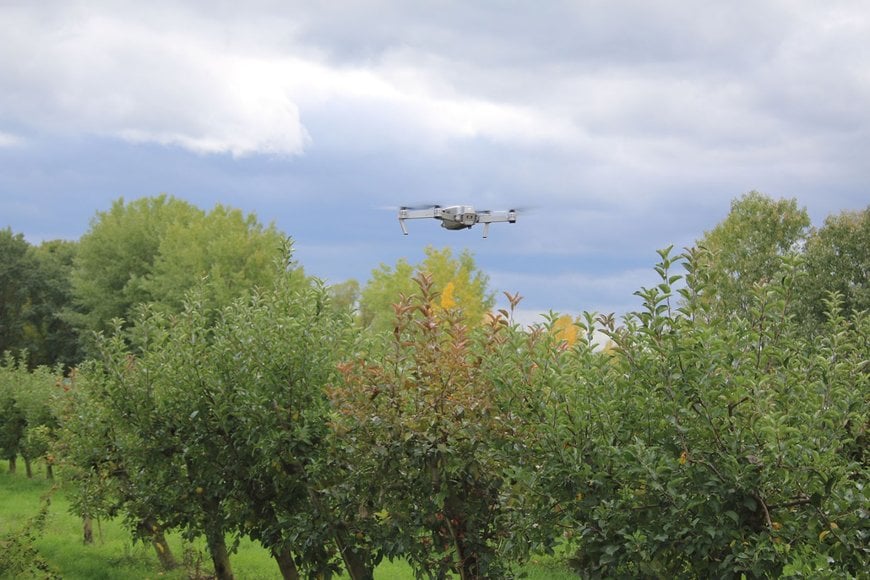electronics-journal.com
07
'20
Written on Modified on
Sensors for early disease symptom detection in European fruit growing
The apple is the Germans’ favorite fruit. Pears rank sixth in annual per capita consumption. Yet apple and pear trees both frequently suffer from diseases: Apple proliferation and pear decline are widespread in European fruit growing.

Fraunhofer research scientists, together with partners, are seeking ways to detect disease symptoms early. They are using satellite images and hyperspectral analysis to detect disease infestation from the air in order to replace time-consuming field assessments and laboratory analyses in the future. Machine learning methods are a key technology for the analysis of disease symptoms.
Apple growing has a long tradition in Germany as well as in Poland, Italy and France. With 13.8 million tons (Eurostat 2018), the apple is the most important fruit in Europe. Pear growing is less important. Both fruit crops, however, suffer from widespread diseases: Apple proliferation and pear decline can cause complete failures of crops from infected trees. The economic damage is immense. The diseases are caused by phytoplasmas. Insects transmit these bacteria without cell walls, which grow into parasites that primarily populate trees’ sieve tubes. Insecticides have to be used prophylactically against the insects to prevent the disease’s spread. The phytoplasmas themselves still cannot be combated directly.
Disease infestation can only be ascertained by an expensive molecular analysis applying PCR methods. Alternatively, trained staff visually assess every tree individually. Symptoms of apple proliferation are witch's broom, enlarged stipules and premature reddening in the fall, which is caused by chlorophyll degradation. The disease is already very advanced then, however. Pear decline has no typical symptoms, just reddening.
Spectral signature: reflection changes depending on the light’s wavelength
The capability to detect chlorophyll degradation already in the summer and thus prevent the spread of apple proliferation and pear decline would therefore be expedient. Research scientists at the Fraunhofer Institute for Factory Operation and Automation IFF in Magdeburg are working on such an early diagnosis system together with the AlPlanta Institute for Plant Research in Neustadt an der Weinstrasse and Spatial Business Integration GmbH in Darmstadt. T
hey are relying on aerial sensing, concretely, on hyperspectral analysis. “In this method, light is split into wavelengths. A plant exhibiting symptoms when its leaves are sampled in the laboratory does so more conspicuously and earlier in certain wavelength ranges than in the visible range alone. A diseased plant reflects more red than green or blue light,” explains Dr. Uwe Knauer, research scientist at the Fraunhofer IFF and expert in machine learning and spectral data analysis. This has been effectively proven by tests in the laboratory in the first phase of the project.

A tree infected with apple proliferation displays symptoms of leaf reddening and small fruit.
The method is supplemented by multispectral satellite images. Large orchards can be scanned with satellite imaging. “We want to combine hyperspectral imaging and satellite imaging to establish an aerial early detection system. We tend to use the hyperspectral camera mounted on a drone to scan smaller areas, such as a single orchard,” explains Knauer. The teams of researchers have also been able to tell diseased and healthy trees apart with the satellite images.
Along with the hyperspectral camera, a computer is mounted on the drone, which records and transmits readings to the server. The images are linked with geographic information and mapped. The outcome is a hyperspectral map with geographic coordinates. Every pixel is provided a spectrum, which is subsequently analyzed.
Digital assessment with drones
The remarkable thing is the project partners’ use of machine learning methods to detect pathological changes of plants based on their digital multispectral and hyperspectral signatures. They use the output data from the visual assessment and the molecular analysis to train and combine different statistical models and neural networks. The algorithms developed this way make it possible to detect apple proliferation and pear decline specifically.

The research scientists get an overview of an entire orchard with a drone. In the future, disease symptoms will be detected right from drone or satellite images based on spectral signatures.
Field surveys and test flights with the hyperspectral drone are scheduled for the fall of this year in order to be able to optimize both the sensor systems and modeling methods subsequently. This research project is being funded by the Landwirtschaftliche Rentenbank. The research scientists hope to make the remote sensing method using spectral data acquisition and analysis available to crop protection services, growers and cooperatives as a service when the project concludes in 2022.
www.fraunhofer.de

